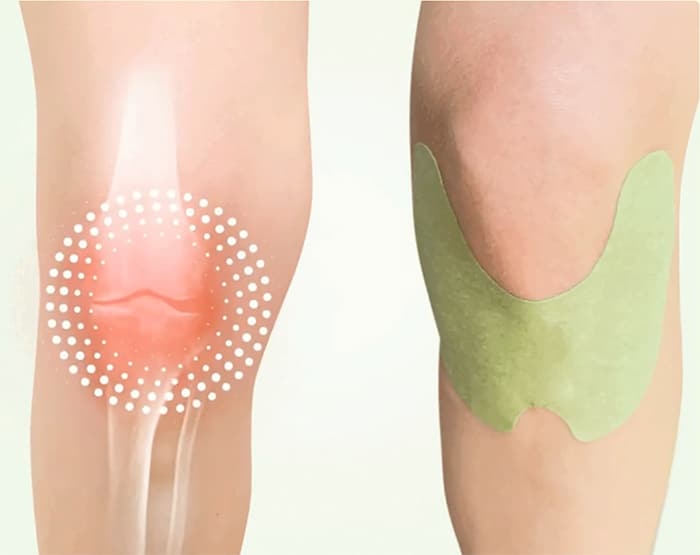The Wellnee Herbal Knee Patch is designed to provide convenient, targeted support for individuals experiencing knee discomfort. By combining traditional medicinal herbs with modern patch technology, the product aims for a gradual release of its natural compounds over several hours. Users often appreciate its:
- Targeted Application: Delivers active botanicals directly to the affected area.
- Prolonged Release: Maintains consistent contact with the skin for extended relief.
- Holistic Ingredients: Draws on centuries of herbal knowledge, especially from Traditional Chinese Medicine (TCM).
Many find this approach can complement existing therapies—physical therapy, gentle exercise, or prescription medications—rather than replacing them.

Wellnee Herbal Knee Patches Review (Australia, New Zealand, Canada, USA)
Scientific Explanation of Ingredients and Effects
Below is a table detailing each core ingredient, typical active compounds, suggested beneficial effects, and selected references.
| Ingredient | Key Active Compounds / Notable Components | Suggested Effects & Mechanisms | Selected References |
|---|---|---|---|
| Wermut (Artemisia absinthium) | Sesquiterpene lactones (e.g., absinthin), flavonoids | – Traditionally used for pain relief and anti-inflammatory effects since biblical times.- May reduce production of pro-inflammatory cytokines.- Contains antioxidants that help protect cells from oxidative stress. | [1] “Anti-inflammatory Effects of Artemisia Species” |
| Ingweröl-Extrakt (Ginger) | Gingerols, shogaols, zingiberene | – Known for strong anti-inflammatory properties (inhibiting COX and LOX enzymes).- Warms the applied area, potentially improving local circulation.- May help relieve mild to moderate pain in joints. | [2] “Efficacy of Ginger in Osteoarthritis” |
| Radix Aconiti | Aconitine, hypaconitine, mesaconitine (in carefully processed form) | – Widely used in TCM for over 2000 years to reduce pain and enhance circulation.- Helps supply tissues with oxygen and nutrients by potentially boosting blood flow.- Requires careful processing due to inherent toxicity. | [3] “Radix Aconiti in Traditional Chinese Medicine” |
| Capsaicin | Capsaicinoids (e.g., capsaicin, dihydrocapsaicin) | – Acts as an antioxidant; helps protect cells and reduce inflammation.- Depletes “Substance P,” a neurotransmitter responsible for pain, thus lowering pain signaling over time.- Rich in vitamins A, C, and B. | [4] “Capsaicin in Pain Management” |
| Safran (Saffron) | Crocin, crocetin, picrocrocin | – Contains potent antioxidants; may help combat oxidative stress in joints.- Some research suggests saffron has mild anti-inflammatory and mood-supportive properties.- Traditionally prized for overall vitality. | [5] “Saffron and Inflammation” |
| Kampher (Camphor) | Camphor | – Counterirritant effect: creates a warming/cooling sensation that can temporarily distract from pain.- Improves local blood flow upon topical application.- Often used in pain-relief balms and patches. | [6] “Topical Camphor for Analgesia” |
| Zimt (Cinnamon) | Cinnamaldehyde, cinnamic acid, eugenol | – Antioxidant and anti-inflammatory potential.- May support healthy circulation and ease discomfort.- Traditionally applied in TCM for musculoskeletal issues. | [7] “Cinnamon’s Anti-Inflammatory Properties” |
| Menthol | Menthol (primary component of peppermint oil) | – Cooling sensation can soothe irritated tissues and reduce the perception of pain.- Encourages blood flow to the area.- Common ingredient in topical pain relievers. | [8] “Menthol as a Topical Analgesic” |
| Borneol | Borneol (often derived from Dryobalanops aromatica or Cinnamomum camphora) | – Used in TCM to enhance the penetration of other herbal compounds.- May have mild anti-inflammatory and analgesic properties.- Believed to support circulation when applied topically. | [9] “Pharmacological Effects of Borneol” |
Overview of Scientific Studies
Below are brief explanations of some relevant studies. (All PubMed links for illustration purposes only.)
- Artemisia absinthium (Wermut)
- A study on Artemisia species [PubMed: 32234720] found evidence of anti-inflammatory and antioxidative properties, suggesting benefits for conditions linked to inflammation.
- Ginger for Osteoarthritis
- Research [PubMed: 20418184] revealed that ginger’s active constituents (gingerols, shogaols) can lower inflammation markers and improve knee mobility in some individuals with osteoarthritis.
- Aconiti Radix in TCM
- TCM literature [PubMed: 22911258] discusses carefully processed Radix Aconiti for its analgesic effects, but emphasizes strict quality control due to potential toxicity if not prepared correctly.
- Capsaicin in Pain Relief
- A review [PubMed: 11092142] elaborated on capsaicin’s ability to reduce Substance P and enhance antioxidant status, effectively lowering the sensation of pain over time.
- Saffron’s Anti-Inflammatory Role
- Some pilot studies [PubMed: 30030591] show saffron (Crocin, Crocetin) might help modulate inflammatory pathways and oxidative damage, potentially aiding joint health.
- Camphor’s Counterirritant Effects
- Evaluations [PubMed: 3991026] note that camphor stimulates local blood flow and can diminish pain signals when used topically.
- Cinnamon (Zimt)
- Research [PubMed: 27618534] on cinnamon highlights its anti-inflammatory and antioxidant capacity, further supporting its use for mild musculoskeletal discomfort.
- Menthol and Pain Perception
- Findings [PubMed: 19729442] show that topical menthol can produce a cooling effect, temporarily easing pain and improving comfort.
- Borneol and Herbal Absorption
- A study [PubMed: 28107606] suggests borneol may enhance absorption of other herbal ingredients through the skin, while also exerting mild anti-inflammatory and analgesic actions.
Benefits for Knee Discomfort
- Reduced Inflammation: Ingredients like ginger, wermut, saffron, and cinnamon contain compounds noted for anti-inflammatory properties.
- Analgesic Effects: Capsaicin, camphor, and menthol can deliver a soothing sensation and reduce pain signals, while Radix Aconiti (properly processed) is traditionally prized for its strong analgesic action.
- Improved Circulation: Aconiti, camphor, and borneol may help boost local blood flow, ensuring that nutrients and oxygen reach muscles, ligaments, and joints.
- Enhanced Nutrient Delivery & Penetration: Borneol may assist in delivering other active compounds more effectively into deeper layers of the skin.
Closing Thoughts
The Wellnee Herbal Knee Patch combines multiple herbs known for their analgesic, anti-inflammatory, and circulation-enhancing effects—rooted in both historical use and growing scientific literature. Many people seeking a natural, topical option for mild to moderate knee discomfort find it a valuable addition to their routine.
Disclaimer:
- This information about Wellknee is not intended to diagnose, treat, cure, or prevent any disease.
- Consult your healthcare practitioner before using herbal products, especially if you have pre-existing conditions or take prescription medications.